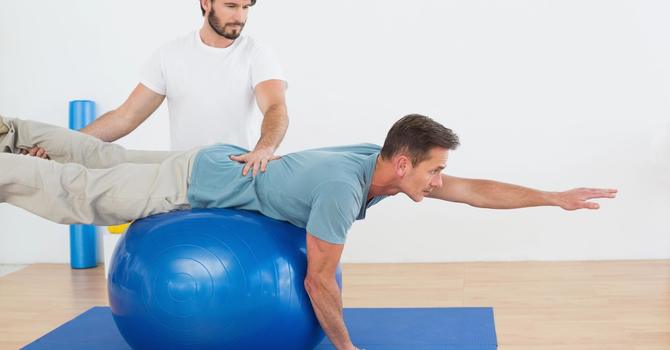
Do you frequently catch yourself hunched over looking at your phone or computer, then quickly sit up straight to correct your posture, just to slowly slump back into the same position and do the same thing a few minutes later? Poor posture is an increasingly common problem in today’s society, and it’s a major concern when it comes to spine health. Slouching and sitting improperly puts extra stress on your spine and surrounding muscles, leading to pain and other health conditions. More importantly, it makes it harder to live life on your terms. The good news is that by paying attention to your posture and making adjustments, you can actually heal your spine and get back to doing what you love. Read on to discover the impact your posture has on the health of your spine, and how chiropractic care can help!
Understanding the Spine
Understanding how your spine works is key to unlocking a healthy spine and leaving behind a life of chronic back and neck pain. Your spine is pretty remarkable, and it’s essential for protecting your spinal cord and supporting your body, allowing you to move around freely. It’s made up of small bones called vertebrae, stacked on top of eachother, which are separated by cushion-like intervertebral discs that make it possible for your spine to flex and twist smoothly. In the center of your spine is your spinal cord, which is like a highway for your brain to communicate with the rest of your body. Three main curves in your spine help to distribute your weight and keep you balanced, and play a major part in your posture and movement:
- The curve in your neck (cervical lordosis)
- The curve in your upper back (thoracic kyphosis)
- The curve in your lower back (lumbar lordosis)
While a certain amount of curvature is normal and healthy, many of us end up with excessive curves in our spine due to sustained postures, like sitting at your desk for long periods of time. Preventing extra stress on your spine is a major win for maintaining it’s natural alignment, ensuring your spine stays healthy long term, and keeping it functioning as it should.
The Relationship Between Posture and Back Pain
From the way your chair is positioned to how you stand in line, poor posture has a variety of contributing factors. By limiting poor posture, you can help maintain a healthy spine and prevent pain. Here are some examples of poor posture and the ways it can lead to spinal problems:
- Forward Head Posture This is when your head juts forward beyond its natural position, putting extra strain on your neck and upper back muscles, leading to tension headaches and neck pain.
- Slouching While Sitting Slouching while you sit causes your spine to curve out of natural alignment and places excessive pressure on your low back. For some people, this may also put extra stress on their upper back.
- Rounded Shoulders Often a result of sitting for long periods of time or hunching over electronic devices, rounding your shoulders puts stress on your upper back and can cause pain and stiffness.
- Uneven Standing Posture Leaning to one side or standing with your weight unevenly distributed can cause alignment changes in your spine, putting extra strain on your lower back.
- Anterior Pelvic Tilt When your pelvis tilts forward for prolonged periods of time, like while sitting at a computer working, it exaggerates the curve in your lower back, potentially leading to lower back pain and impacting spine function.
If you struggle with poor posture, it’s important to address it as soon as possible to avoid permanent changes to your spine, which can potentially require more serious treatments down the road.
Risks of Poor Posture
When left untreated, poor posture can impact your spinal health in a number of ways. Degenerative Disc Disease: Over time, your body naturally experiences wear and tear. But poor posture can accelerate the rate at which changes happen to the vertebrae in your back, causing pain and reducing mobility. Spinal Misalignment: Symptoms of spinal misalignment can vary, from chronic headaches and low back pain, to numbness and tingling in your hands or feet due to nerve compression. Chronic Pain Conditions: Poor posture can worsen chronic conditions like osteoarthritis and sciatica. Persistent pain and limited mobility means that daily activities become harder, and finding the energy to address your posture on your own might be entirely out of reach. Posture and spinal health go hand-in-hand. By addressing your posture now, you’re taking steps to alleviate the strain on your spine, preventing potential problems from long-term misalignment, and working toward an active lifestyle with less pain.
Tips to Improve Posture
While everyone’s posture needs will be slightly different, there are some big wins that you can get with just a few adjustments to your habits and daily routines. When you sit, think about keeping your feet flat on the floor, knees bent at a right angle, and your back supported. When you stand, distribute your weight evenly on both feet, and stand tall with your shoulders back. Whether you’re sitting or standing, avoid slouching or excessively leaning forward for long periods. If you spend hours each day sitting in front of a computer, then it’s worth putting some extra thought into making sure your workspace is set up to promote good posture. Adjust your chair so your feet are flat on the floor, knees level with your hips, and place your computer monitor directly in front of you so that the top edge is at eye level. Small adjustments can make a difference, so each time you remember to sit up straight, make sure your chair is at the right height, or take a break for some posture exercises, you’re taking steps toward a healthier spine.
How Strive2Move Can Help
While it’s important to practice good posture and promote spinal health throughout the day on your own, working with a chiropractic specialist is the best way to optimize your posture and spine health. Chiropractic treatment focuses on diagnosing and addressing musculoskeletal disorders in a holistic way. Through precise manual manipulations (or adjustments) our chiropractors promote the body’s innate ability to heal itself, starting with a healthy spine. Our patients that receive chiropractic treatment for posture correction experience numerous benefits, including:
- Pain Relief Chiropractic adjustments improve alignment of your spine, relieving stress on your muscles and joints, and alleviating chronic pain in your spine.
- Better Mobility When your spinal alignment is improved, your joints have more space to move and function normally, enhancing range of motion and reducing stiffness.
- Improved Spinal Health Regular chiropractic care for posture improvement helps maintain proper spinal alignment, which can prevent conditions such as spinal stenosis and degenerative disc disease.
Chiropractors specialize in providing personalized care to heal your spine and get you back on your feet, without the pain. At Strive2Move, each of our chiropractic specialists are trained to provide personalized care that improves the health of your spine. Our team is proud to provide comprehensive treatment plans that are personalized to you, taking into account your needs, preferences, and goals. Ready to take the first step towards a healthier spine? Schedule a call today to discover the life changing benefits of chiropractic treatment for posture correction with our experts at Strive2Move!
Key Takeaways
- Keeping your spine healthy can prevent injury and other health conditions, like degenerative disc disease.
- Poor posture negatively impacts the health of your spine, causing pain and limiting how well you can move through life.
- Practicing good posture promotes spinal health and overall well-being, and you can make small changes every day to maintain proper posture.
- Expert guidance and personalized treatment plans are essential to get your spine back to good health and into alignment.





